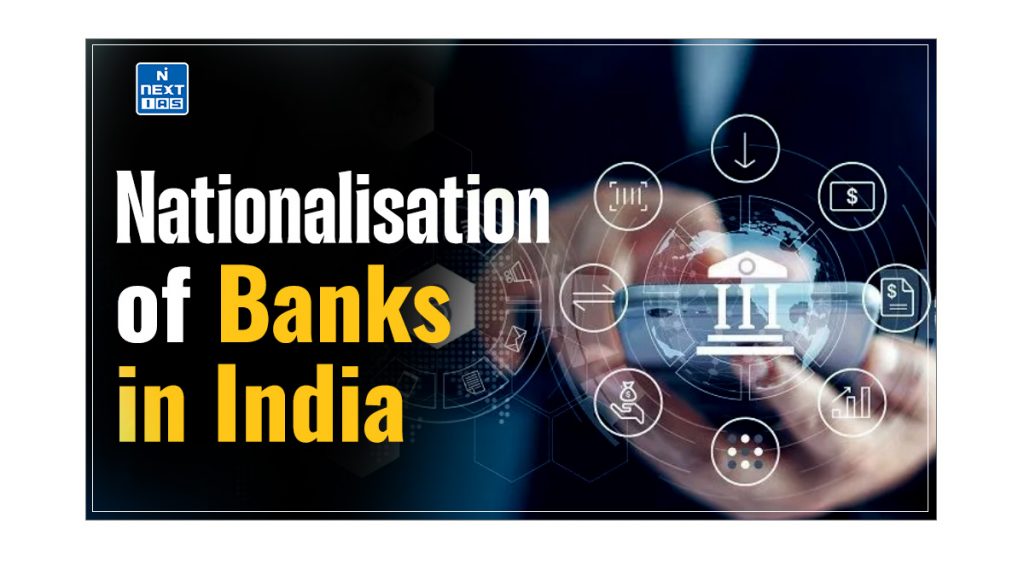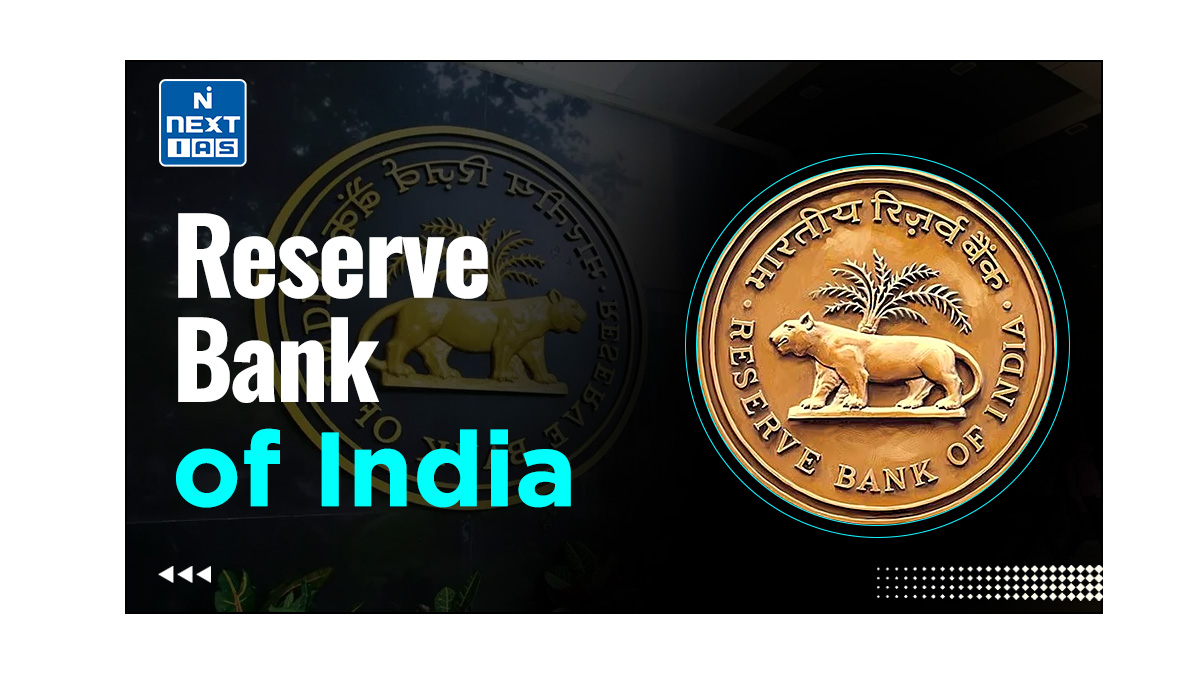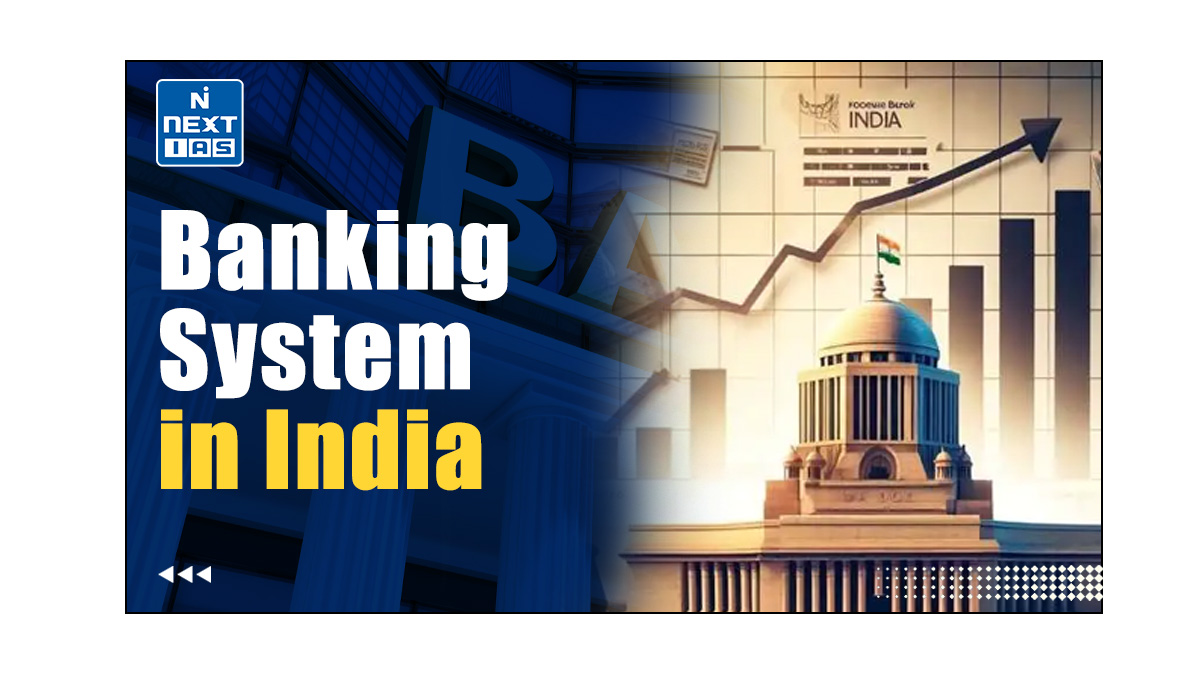
The nationalisation of banks in India was a transformative event that redefined the Indian banking landscape. Though it brought several benefits, it also faces some criticisms. This article aims to study in detail the concept of nationalisation of banks in India, its history, objectives, impact, criticisms, and other related aspects.
Meaning of Nationalisation of Banks
- Nationalisation of Banks means transferring control and ownership of private banks into the hands of the government.
- This means the government becomes the majority shareholder in an erstwhile private bank, and the bank operates as a public sector entity.
Different Phases of Nationalisation of Banks in India
- The Government first went for partial nationalisations as an experimental basis.
- After this experimentation went successful, the Government decided to go for complete nationalisation of banks.
- Accordingly, the Banking Nationalisation Act, 1969 was passed, under which a total of 20 private banks were nationalized in the following two phases:
Phase 1 of Nationalisation of Banks in India
In Phase 1 of Nationalisation of Banks in India, 14 banks with deposits more than ₹50 crores were nationalised in July 1969.
Phase 2 of Nationalisation of Banks in India
In Phase 2 of Nationlisation of Banks in India, 6 banks with deposits more than ₹200 crores were nationalised in April 1980.
| First Bank to be Nationalised in India With the enactment of the SBI Act, 1955, the Government of India, partially nationalised the three Imperial Banks (mainly operating in the three Presidencies of past with their 466 branches) and named them the State Bank of India. This became the first public sector bank in India. |
Needs and Reasons for Nationalisation of Banks
First of all, the Reserve Bank of India (RBI) was nationalised in 1949, which meant that a central banking was in place. After this, the government decided to nationalise some selected private banks due to the following major reasons:
- Post-independence, the Government of India (GOI) adopted planned economic development for the nation. Nationalisation of banks in India was needed for the socialistic policies that were adopted under the Five Year Plans.
- Multiple economic and political shocks due to incidents like wars with China in 1962 and Pakistan in 1965 had created immense pressure on public finances.
- Two successive years of drought had not only led to food shortages but also compromised national security because of the dependence on American food shipments (PL 480 program).
- Subsequently, a three-year plan holiday affected aggregate demand as public investment was reduced. The decade of 1960-70s was the lost decade for India as the economic growth barely outpaced population growth and average incomes stagnated.
- Industry’s share in credit disbursed by commercial banks almost doubled between 1951 and 1968, from 34% to 68% whereas agriculture received less than 2% of total credit.
- Agriculture needed a capital infusion, with the initiation of the Green Revolution in India that aimed to make the country self-sufficient in food security.
- As the banks were owned and managed by the private sector the services of the banking had a narrow reach – the masses had no access to the banking service;
- The Government needed to direct the resources in such a way that greater public benefit could take place. Nationalisation of banks provided the way out.
- The planned development of the economy required a certain degree of government control on the capital generated by the economy.
- Other reasons that necessitated the nationalisation of banks in India were:
- Social welfare.
- Controlling private monopolies.
- Expansion of banking to rural areas (Financial Inclusion).
- Removing regional imbalance and urban-rural divide.
Benefits of Nationalisation of Banks
- Removal of Barriers: Nationalisation of banks in India meant that there were no longer any barriers, social, economic, or political between the bankers and customers.
- This enabled in a massive quantitative expansion in the customer base and also helped improve the services.
- Enabled Banks to Widen their Reach: The banks began to expand into the rural areas. With this the economy also expanded and employment opportunities were created even in the remote corners of the country.
- Expansion of Branch Network: During the last 28 years of nationalisation of banks, the branches of the public sector banks rose 800 percent from 7,219 to 57,000, with deposits and advances taking a huge jump by 11,000 percent and 9,000 percent.
- Reorientation of Bank Lending: Accelerated the process of development of the priority sectors of the economy, which were hitherto not getting sufficient attention from commercial banks.
- Increased Credibility of Indian Banking System: Ease of factor access and increased banking habits led to increased credibility of the Indian banking system.
- Priority Sector Lending: Priority Sector Lending (PSL) scheme, that was initiated post nationalisation of banks, meant that the agriculture and allied sectors emerged as the largest contributors to the national income.
- Mobilization of Savings: Nationalisation helped mobilize the savings of the people to a great extent and utilize them for productive purposes.
Criticisms of Nationalisation of Banks
- Inadequate Banking Facilities: Even though banks’ reach has increased across the country, many parts of the country are still remained unbanked.
- This was due to low levels of efficiency due to a lack of competition.
- Lowered Efficiency and Profits: After nationalisation of banks, they were brought under the control of government which meant political pressures thereby hampering professionalism.
- It resulted into lower efficiency and poor profitability of banks.
- Political and Administrative Interference: Many public sector banks badly suffered due to the political interference and populist policies.
- It was seen in arranging loan melas which resulted in huge non-performing assets. Even now a huge portion of NPA lies in account of Public Sector Banks.
- Increased Expenditure: Huge expansion in a branch network, large staff administrative expenditure, trade union struggle, etc., lead to increased banks expenditure.
- Complex Interest Rate Structure: Different rate of interest with different loans tenure resulting in higher Non-Performing Assets (NPAs).
Conclusion
The nationalisation of banks in India was a landmark event that re-shaped India’s banking system. It marked a significant step towards achieving greater financial inclusion and directing credit towards priority sectors. However, it has also led to some issues and challenges for the Banking System in India. Necessary banking reforms should be carried out in order to mitigate its ill effects and make the Indian banks more efficient.
List of Nationalised Banks in India
The following is the names of nationalised banks in India:
- Banks of India
- Bank of Maharashtra
- Central Bank of India
- Indian Overseas Bank
- Punjab & Sindh Bank
- Bank of Baroda
- Canara Bank
- Indian Bank
- Oriental Bank of Commerce
- Punjab National Bank
- UCO Bank
- Union Bank of India
| – United Bank of India and Oriental Bank of Commerce have been merged with Punjab National Bank. – Dena Bank and Vijaya Bank have been merged with Bank of Baroda. |
Frequently Asked Questions (FAQs)
When was Reserve Bank of India nationalised?
The Reserve Bank of India (RBI) was nationalised in the year 1949, putting a central banking in place.
How many banks are nationalised in India now?
As of now, the total number of nationalised banks in India is 12.
When was the first nationalisation of Commercial Bank?
The first nationalisation of commercial banks in India took place on July 19, 1969. This is when 14 major commercial banks were brought under government ownership.






